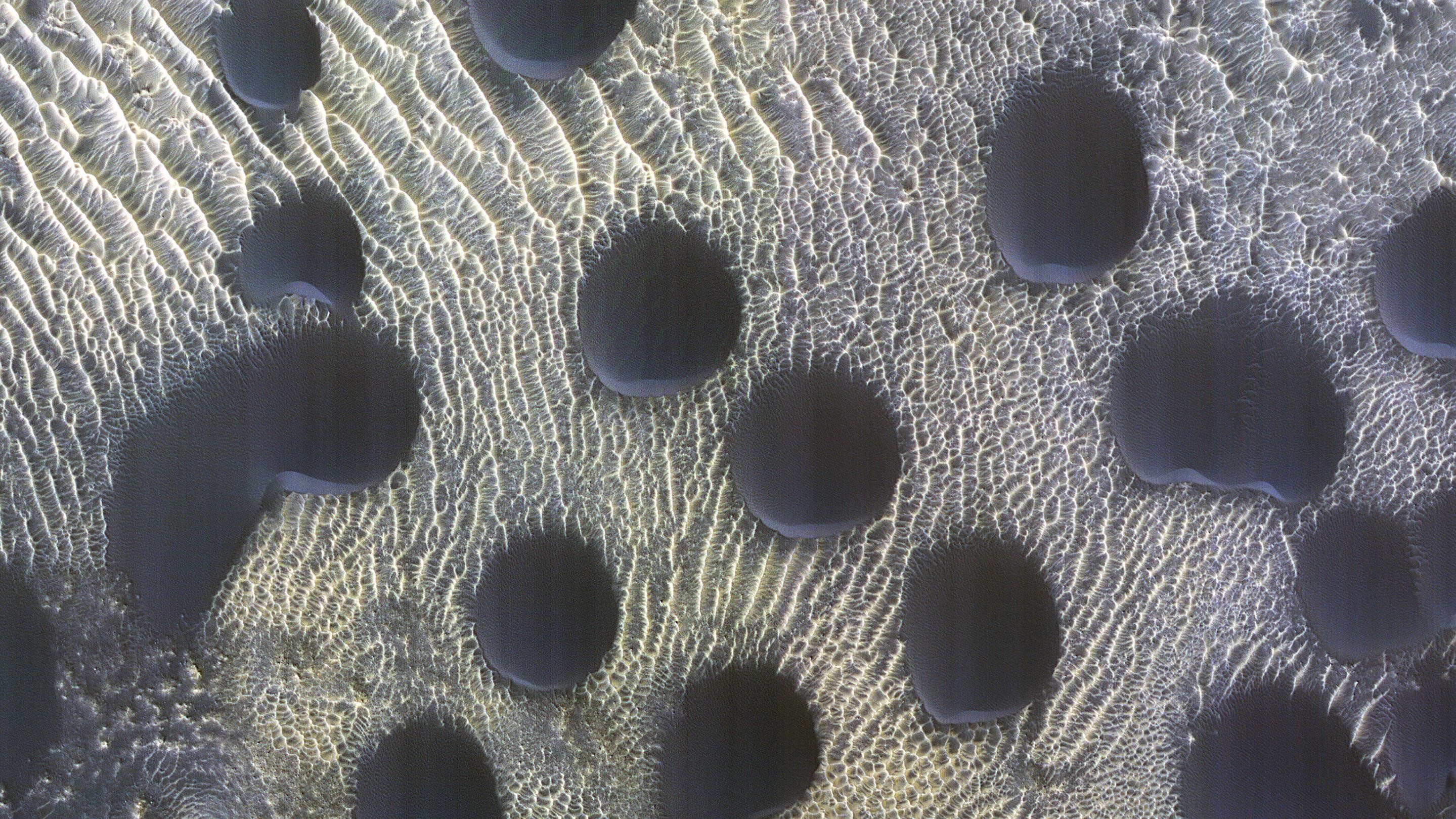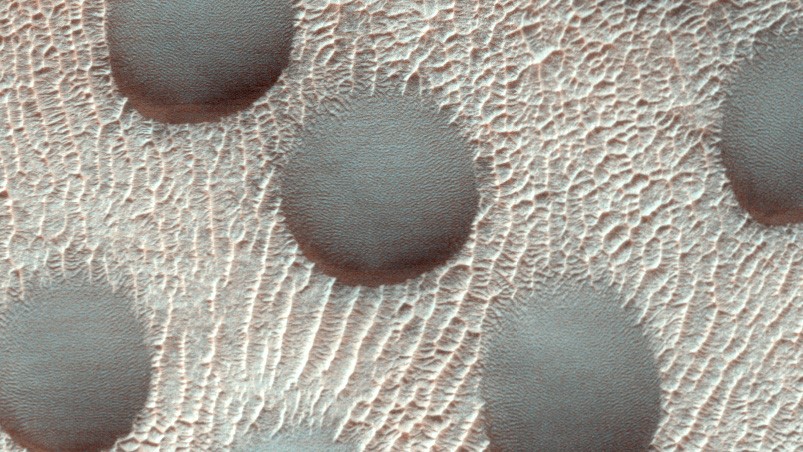Bizarre sand dunes on Mars are 'almost perfectly circular,' and scientists don't know why
A high-resolution camera mounted on NASA's Mars Reconnaissance Orbiter has snapped pictures of unusual, almost perfectly circular sand dunes on the Red Planet's surface.
NASA's Mars Reconnaissance Orbiter (MRO) has captured stunning images of almost perfectly round sand dunes on the surface of the Red Planet. While sand dunes of all shapes and sizes are common on Mars, circular dunes like these are a rare sight.
The dunes appear as slightly asymmetrical splodges in the picture, which was taken on Nov. 22, 2022, in Mars' northern hemisphere by the University of Arizona's High Resolution Imaging Experiment (HiRise) camera. The steep sides of the dunes are slanted southward, which might be due to Martian winds blowing the sand in that direction, planetary scientists at the university said in a statement. They are unsure what caused the dunes to be so near-perfectly circular, however.
The image is part of a series taken by HiRise to help monitor how frost melts on Mars at 60 different locations as the northern hemisphere of the planet reaches the end of its winter season. Like Earth, Mars experiences a cycle of the 4 seasons of summer, spring, fall and winter. While the round sand dunes appear ice-free in this picture, a previous image showed them covered in frost.
HiRise, which is mounted on the MRO spacecraft, has been orbiting and surveying sand dunes on Mars since 2006 to help scientists understand how they move and how the weather patterns shape them. Data from the high-resolution camera indicate that sand dunes are migrating from the equator to the poles at a rate of up to 3.3 feet (1 meter) per Martian year, or 687 days on Earth.
Researchers are also using HiRise to study glacier-like formations and deposits at the base of slopes across Mars, which scientists think may once have been rich in ice, although the source of this ice remains a mystery, according to NASA.
The MRO's primary mission was to search for traces of water on Mars. While this mission ended 12 years ago on Dec. 21, 2010, the spacecraft still serves as a communications bridge back to Earth for other Mars missions and continues to relay surprising images captured by HiRise: The camera also recently spotted rocks that look just like a teddy bear.
Get the world’s most fascinating discoveries delivered straight to your inbox.

Sascha is a U.K.-based staff writer at Live Science. She holds a bachelor’s degree in biology from the University of Southampton in England and a master’s degree in science communication from Imperial College London. Her work has appeared in The Guardian and the health website Zoe. Besides writing, she enjoys playing tennis, bread-making and browsing second-hand shops for hidden gems.




